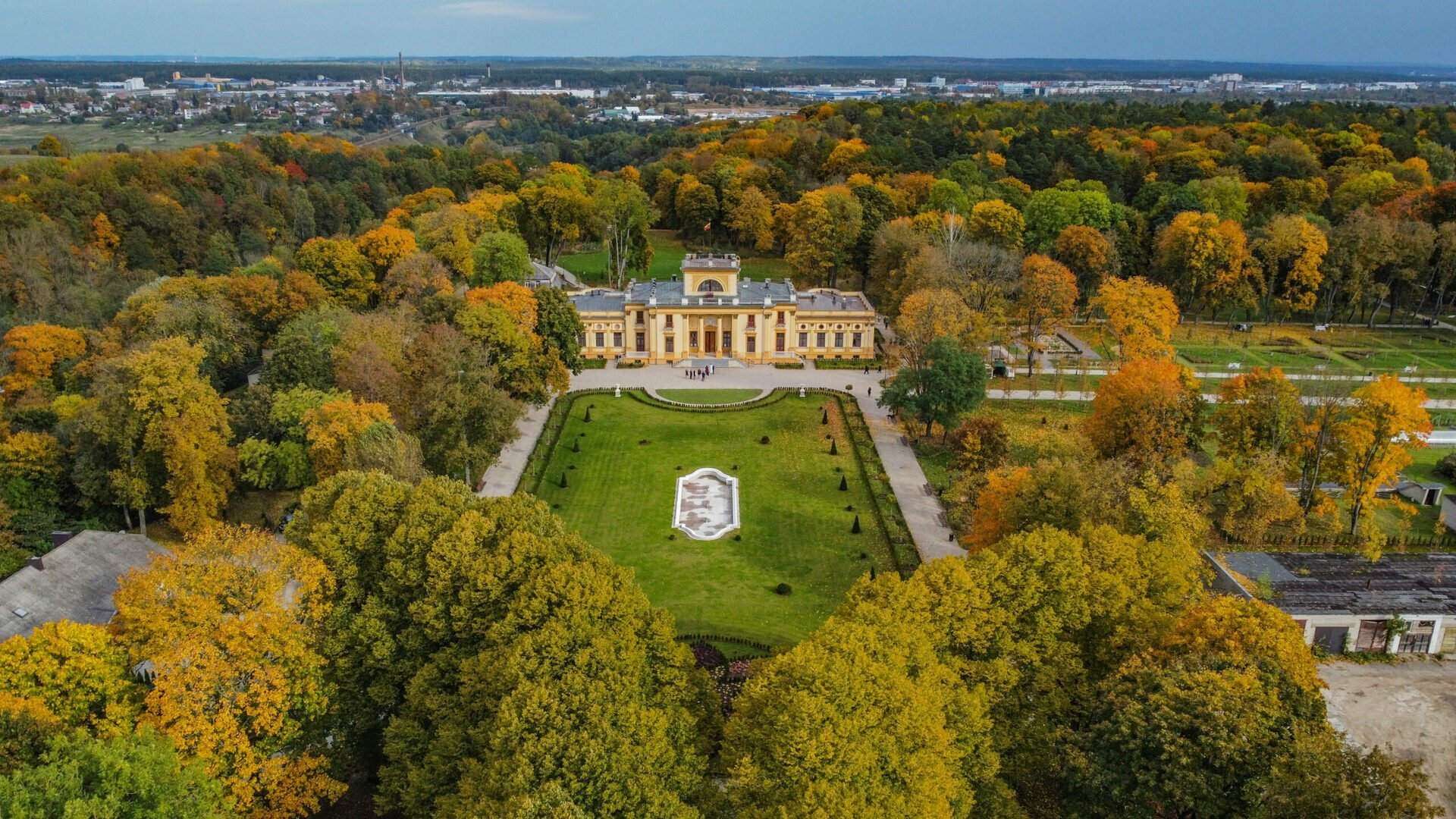Yet another object of attraction, the Trakų Vokė estate, has appeared on the map of Lithuanian mansions. Well, maybe it’s not quite right to say ‘appeared’. It has always been there; but until quite recently it was abandoned and neglected, so that even the people of Vilnius, in whose area the estate is, knew little about its existence.
Today, even with the restoration work still going on, visitors can already admire the renovated palace, the carefully looked after gardens, the paths, and the illuminated fountain on the Trakų Vokė estate. The interior of the mansion is still being restored, but that too is open to the public. Visits to the mansion can be arranged, presenting the story of the estate, and everyday details and the lives of its last owners, the Tiškevičius family.

It is interesting to learn that quite a few foreign films have been shot in the mansion, including Anna Karenina (2013) and War and Peace (2007, 2016), and separate scenes from the films Hero (2014), Letters to Sofija (2012), Blood in the Snow (2011), Circles in the Water (2010), True Horror (2009), Tchaikovsky. The Creation of Greatness (2006), Uncle Adolf (2005), and Silence Becomes You (2005). Part of the US television documentary The Last Czars (2018) was also shot there. So during a tour, it is possible to find out which details in the interior of the palace are original, and which are only props left over from the most recent film.
History
When the first Tartars arrived in Lithuania in 1397 with Grand Duke Vytautas of Lithuania, after his successful foray to the Crimea, they were granted land at Trakų Vokė. Until the 19th century, the owners of the estate changed several times. In the middle of the 19th century, Count Juozapas Tiškevičius (1805-1844) bought it from Liudvikas Dombrovskis, the marshal of the nobility of Trakai. The Tiškevičius family owned the estate for almost 100 years.
At first, it was used as a summer residence by the Tiškevičius family, but later, when they decided to live there permanently, they built the mansion we see today. At their request, Leonard Marconi, an architect of Italian origin, designed an ornate mansion based on the residence of the kings of Poland in Warsaw. The façade of the two-storey mansion was decorated with eight sculptures, and the hallway was decorated with mouldings of the coat of arms of the Tiškevičius family, which can still be seen today. The interior was also splendid: there were valuable paintings on the walls, the furniture was specially made abroad, the rooms were heated by fires in marble fireplaces, and light was provided by crystal chandeliers.
In 1892, Count Jonas Juozapas (1867-1903), who had inherited the estate at Trakų Vokė, hired the famous landscape architect E. André to design the park. André also designed parks for three other mansions in Lithuania, at Palanga, Užutrakis and Lentvaris, which also belonged to the Tiškevičius family. Today, when we walk around the park, we can see surviving features of the original park that are typical of André’s designs.
The Tiškevičius family, who were successful entrepreneurs, set up a fish farm on the estate, which exported its products to Russia and Germany on the railway that passed right through the estate. The surviving system of ponds can still be seen today at the foot of the hill in the park.
The estate remained in the hands of the Tiškevičius family, who lived there until the outbreak of the Second World War. Fearing the persecution of the nobility by the occupying authorities, they fled to the West in 1939.

Left unoccupied, the condition of the mansion naturally deteriorated. During the war, German settlers from the Netherlands lived in it. The paintings, furniture, crystal chandeliers and other valuables were looted, and the exterior decoration was destroyed. In 1945, after the end of the war, the estate became a villa for the Council of Ministers. Later it became the Vokė branch of the Dotnuva Agricultural Institute.
The Trakų Vokė mansion is still being revived and restored today, but the estate is open to the public, and you can come and learn about the history of the Lithuanian nobility, or just take a walk around the picturesque surroundings.
This article is a part of a project implemented within the framework of the Innovation of Tourism Services and Products Program, with funding from the Agency for Science, Innovation and Technology, and from funds allocated by the Ministry of Economy and Innovation of the Republic of Lithuania.


